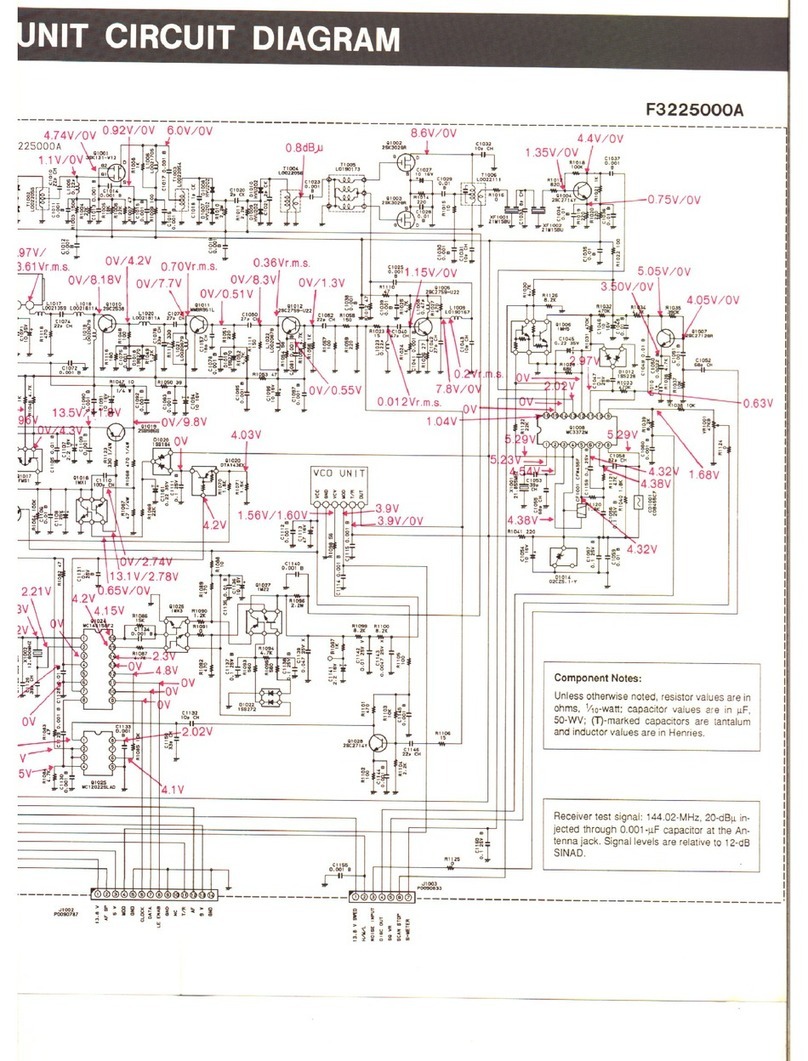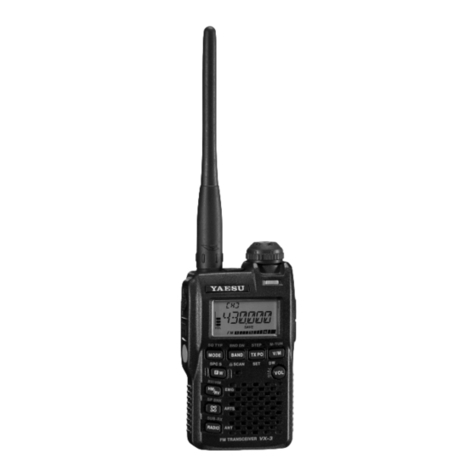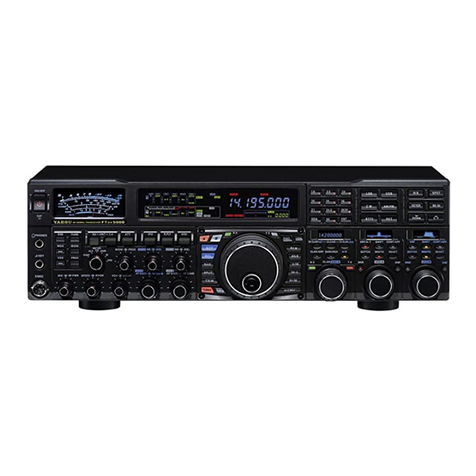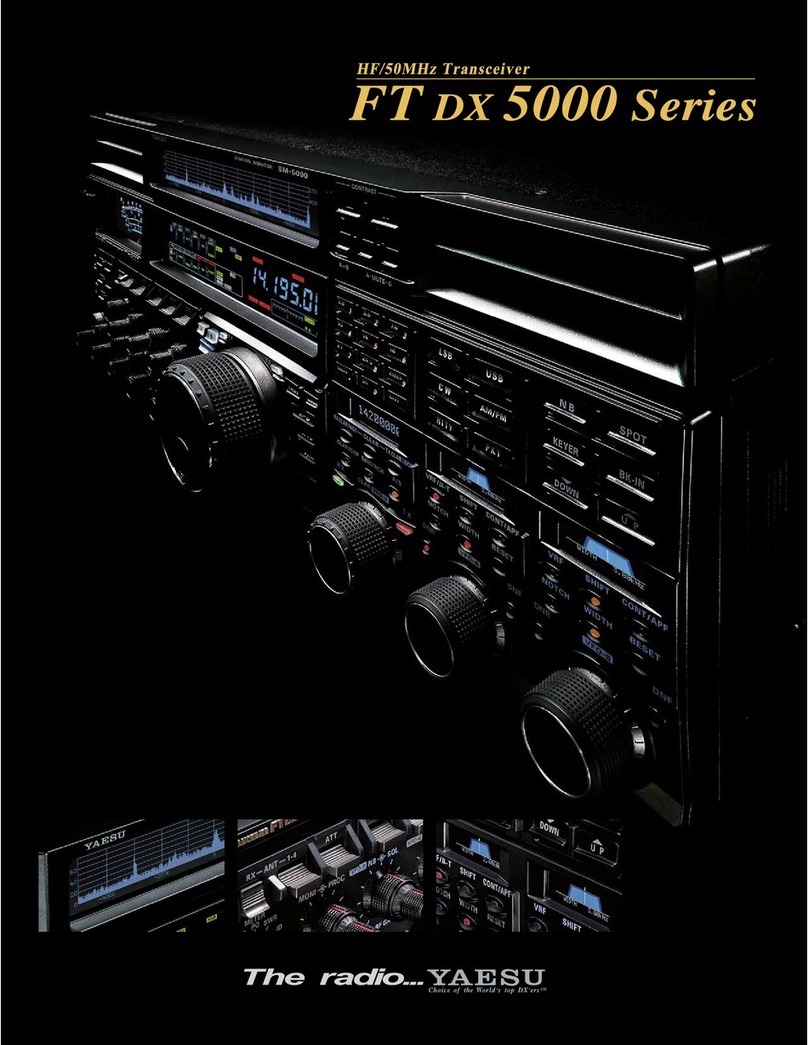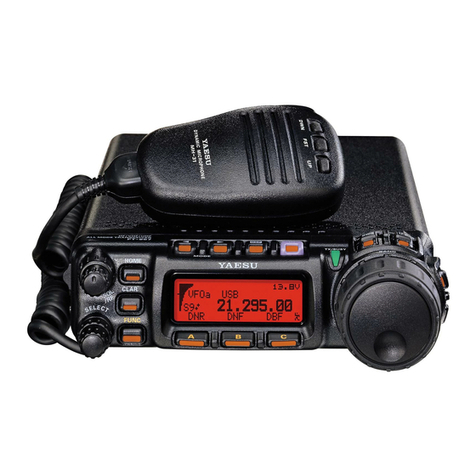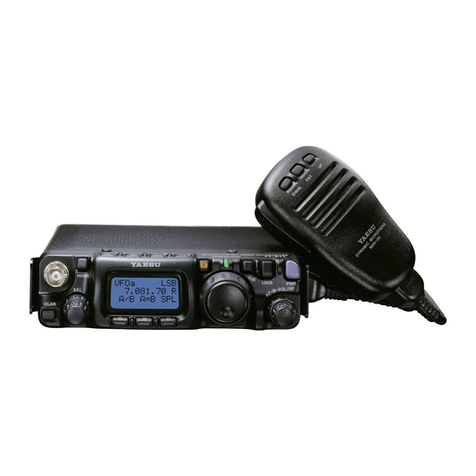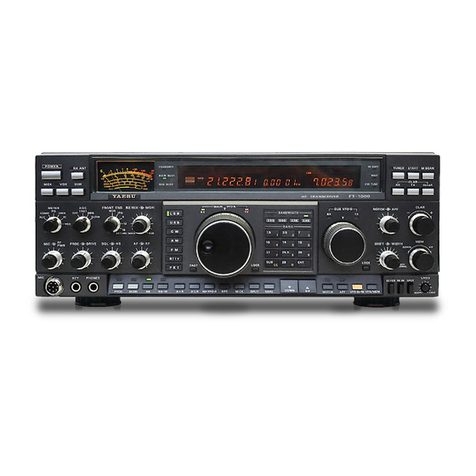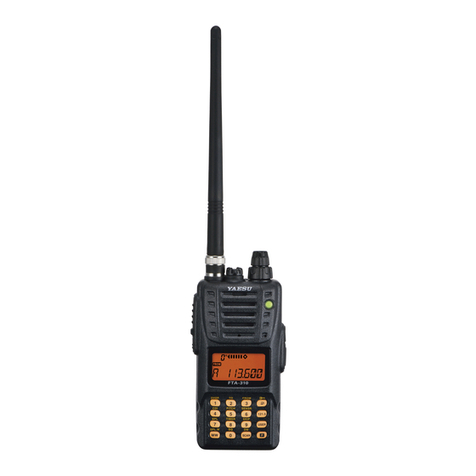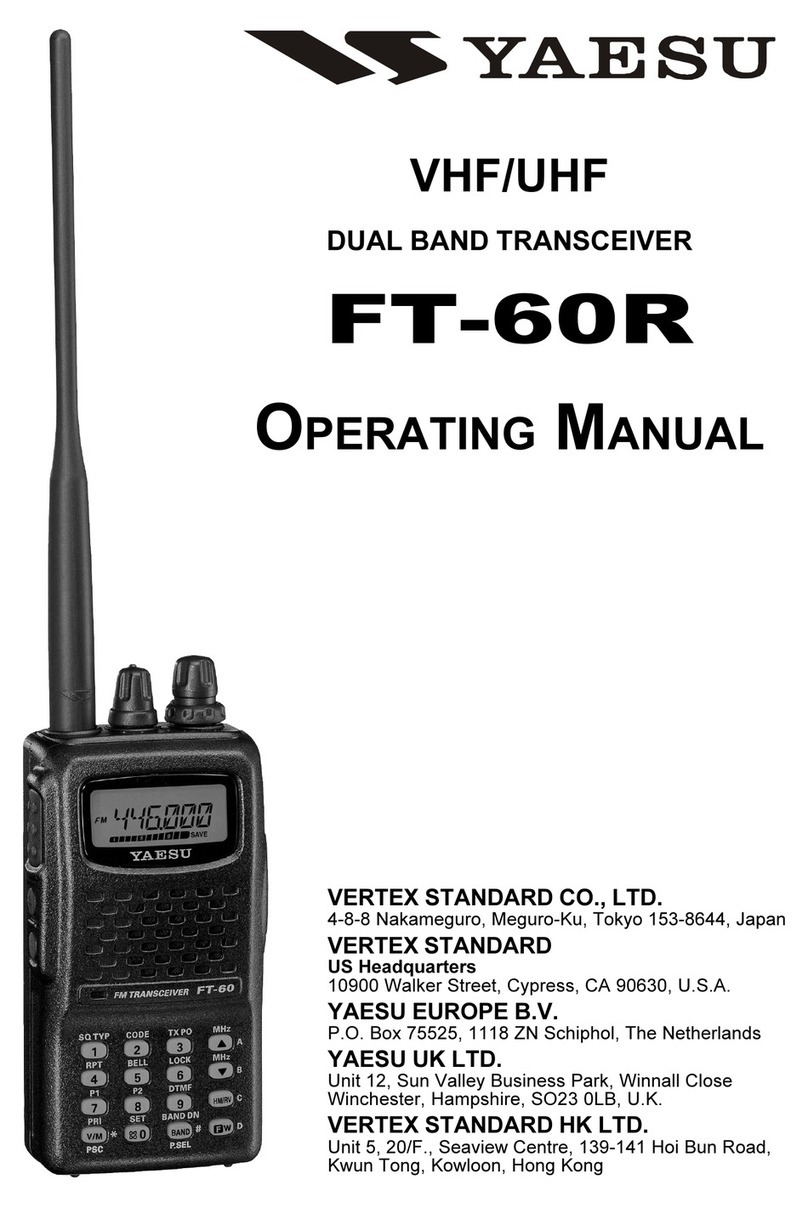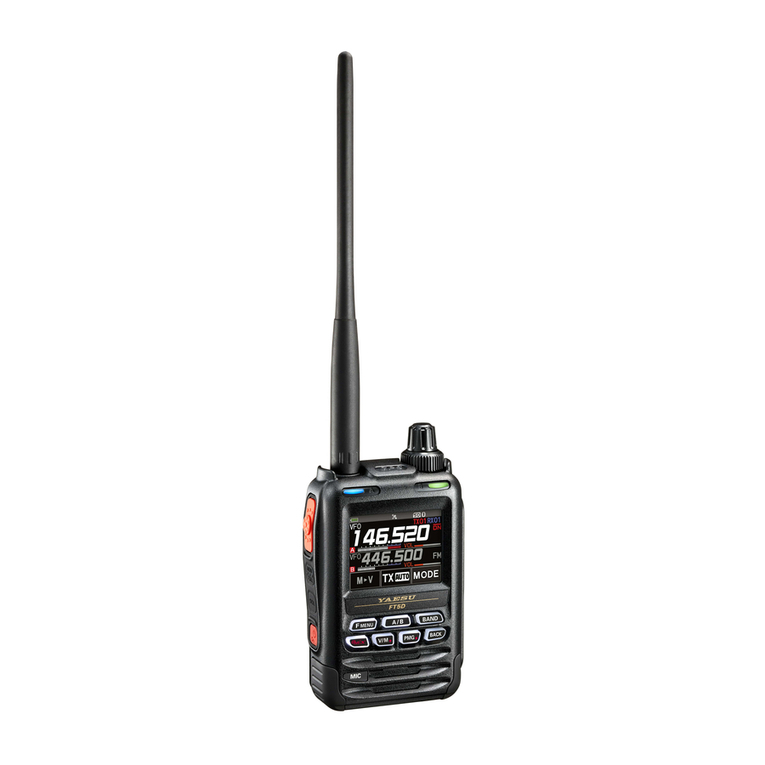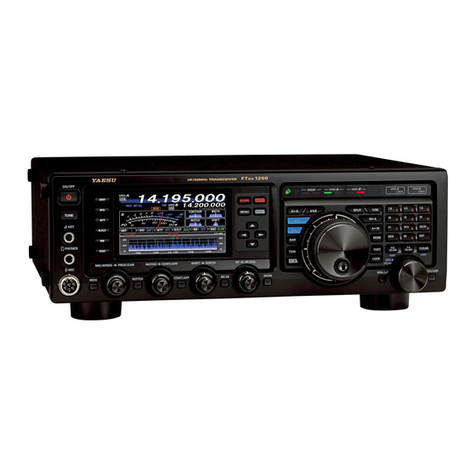
FT-25R/FT-25E Advance Manual 9
Using the Squelch Feature
Many repeater systems require a very-low-frequency audio tone be superimposed on
the FM carrier in order to activate the repeater. This helps prevent false activation of the
repeater by radar or spurious signals from other transmitters. This tone system, called
“CTCSS” (Continuous Tone Coded Squelch System), is included in the FT-25R/E. The
CTCSS is very easy to activate.
Selecting the Squelch Type
1. Press and hold the Fkey to enter the Set Mode.
2. Press the [▲] or [▼] key to select Set Mode Item “29 SQL TYPE”.
3. Press the Fkey to enable adjustment of this Item.
4. Press the [▲] or [▼] key to select one of the modes
described below.
Display Description
OFF (default
setting) Disables transmit / receive tone squelch function. -
R-TONE Enables receive only tone squelch function (the icon
appears on the LCD display). -
T-TONE Enables transmit only tone squelch function (the icon
appears on the LCD display). -
TSQL
Enables the tone squelch transmit and receive function (the
icon appears on the LCD display).
Mutes the FT-25R/E receiver until it receives a call from
another transceiver sent with a matching CTCSS tone.
-
REV TN
Enables the reverse tone squelch function (the blinking
icon appears on the LCD display).
Use to monitor communications based on the squelch control
system in which a received signal containing the selected tone
will be muted, and signals not containing the selected tone will
be heard.
-
DCS
Enables the digital code squelch function (the icon
appears on the LCD display).
Sends a DCS code signal when transmitting, and waits for a
DCS code when receiving.
11
PAGER
Enables the pager function (the
v
icon appears on the
LCD display).
When communicating via transceivers with your friends,
specify personal codes (each code is composed of two tones)
so that you can call only specic stations.
12
5. Press the PTT switch to save the new setting and return to normal operation.


